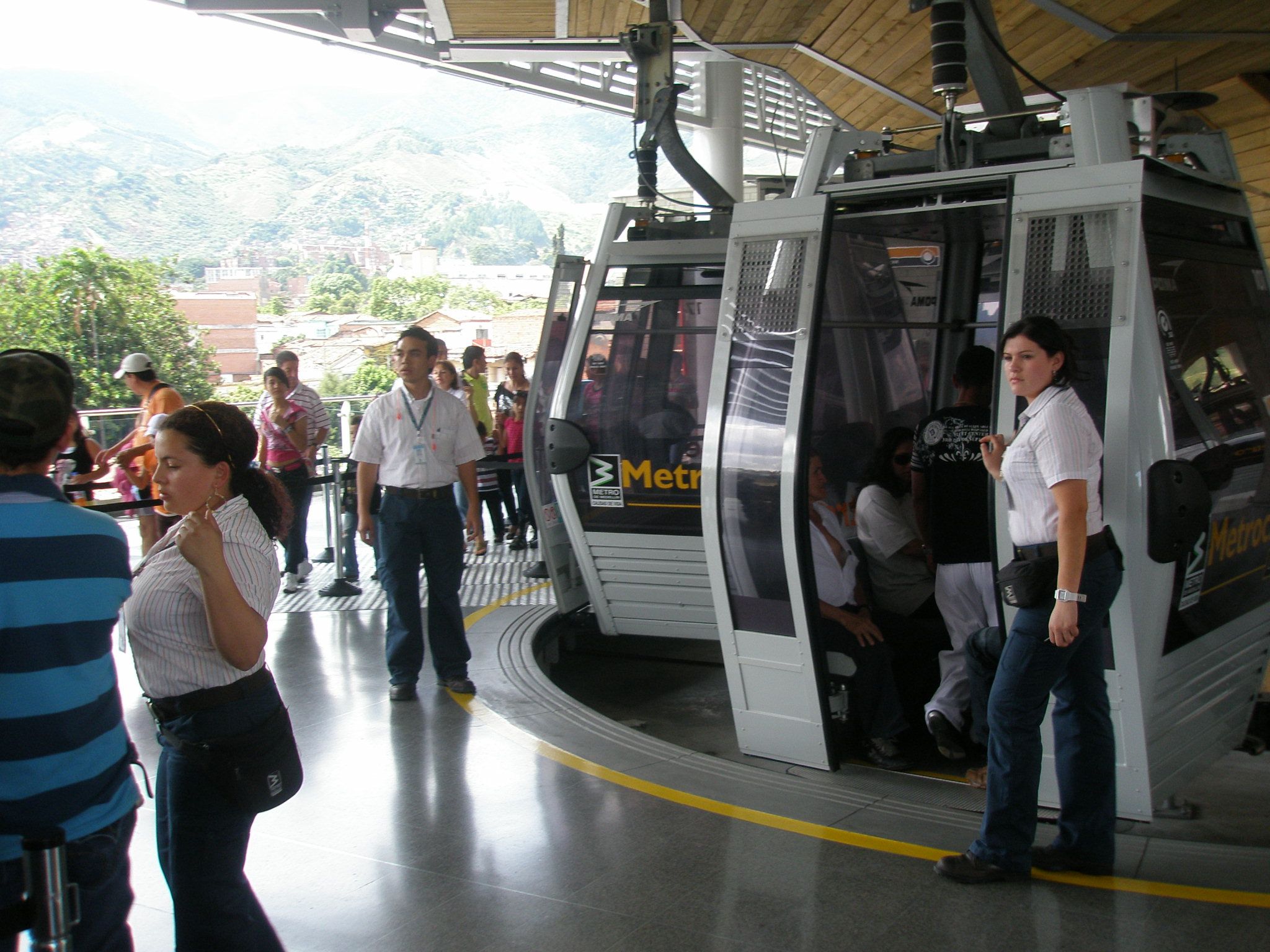Back around New Year's 2009 I had the good fortune to visit Medellin, Colombia. I really had no intentions of going there as a planning wonk - I mostly was just traveling with a close friend and wanting to explore new places. I'd heard by then that Medellin had revived itself in some interesting ways, so naturally was eager to learn more. But mostly what I'd heard was that Medellin had an incredible entertainment scene and arguably the most beautiful people on the planet. In both cases, it didn't disappoint.
Needless to say, like most visitors to Medellin I was very impressed with how nice the city is. For anyone around during the bad days of Pablo Escobar, the idea of Medellin as a place to visit seems rather absurd, let alone as any kind of example of urbanity. The city sits in a remarkably beautiful valley and is green and lush. Clearly dealing still with fairly extreme poverty, the city fathers have done remarkable work to improve people's lives. The gondolas and transit system have gotten tons of ink, but the improvement to public spaces shouldn't be overlooked.
Since 2009 the planning world has fallen in love with Medellin's story and much has been written. Anthony Flint writes this week from UN Habitat's World Urban Forum in Medellin:
It really has been an incredible transformation. A place people wouldn’t dream of visiting became a mecca for urban planners on a par with Portland, Oregon. Visitors come from all over to see what they might take back to their cities. Foundations like Rockefeller, Ford, and Kresge like Medellín because the interventions have been targeted and simple, but seem to leverage a lot of impact. The burgeoning cities of the developing world, with their staggering problems of unhealthy conditions and inequality, can overwhelm the even the most idealistic policymaker. In baseball terms, Medellín has played small ball.
And he writes a bit on some pushback to Medellin's fame:
Interventions can be second-guessed as too little or too much, or even just a little other-worldly. The stretch of the cable car line from Santo Domingo and the Spain Library seems like an awful lot of infrastructure to get to a park for horseback riding and hiking trails. At the 20 Julio neighborhood near San Javier, festive music plays as one ascends on a series of shiny new escalators right out of a suburban shopping mall. In advance of the World Urban Forum, residents were encouraged – or maybe instructed, as one colleague mused -- to paint their homes in bright colors. The project cost $8 million.
A cynic might find the "Metro culture" -- where there is zero tolerance for fights or graffiti on the world-class system of trains, bus rapid transit and the cable cars, and there is a strict code for giving up seats to the elderly – as overweening, an attempt by planners to control behavior. But it seems to work. The metro is efficient and spotless.
One other factor that raises questions about the transferability of Medellín's innovations is something that doesn’t come up often: the powerhouse public utility company EPM, which provides millions in revenue for the municipality.
Personally, I'd cut Medellin a ton of slack. It's pretty hard for most of us to have any idea of what the people there have been through. Some of the stories people told me were horrendous. And yet, people not only have persevered but also seem to have an incredible positive spirit. Medellin still certainly has room for plenty of improvement (what cities can't say that?) but I'd bet on them continuing to achieve great things.
American cities could learn an awful lot from the transformations throughout South America. We share so much common history with our southern neighbors - perhaps it's time we spent more travel dollars south instead of across the Atlantic. I'm more than ready to return.
Here's a few shots from my visit:
If you got value from this post, please consider the following:
- Sign up for my email list
- Like The Messy City Facebook Page
- Follow me on Twitter
- Invite or refer me to come speak
- Check out my urban design services page
- Tell a friend or colleague about this site





